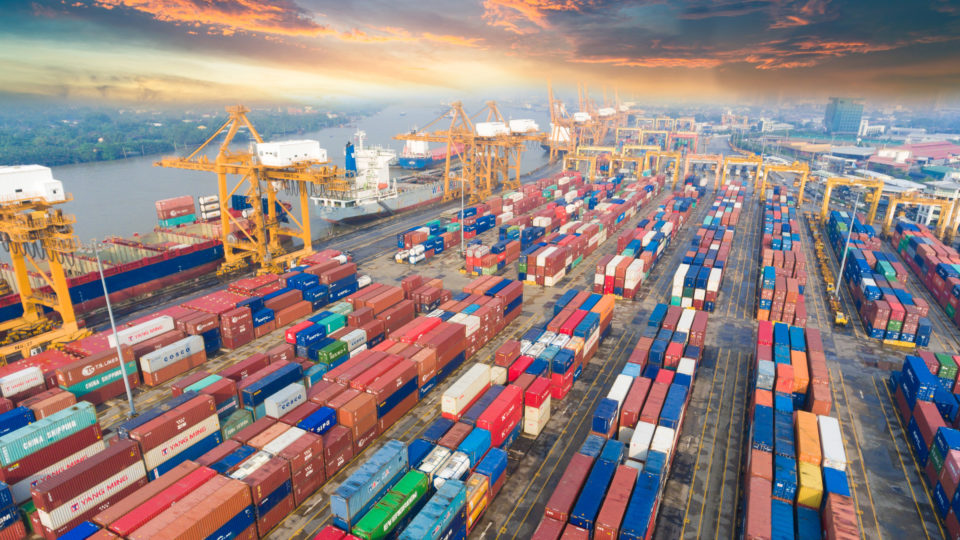Posted On February 17, 2021
In a globalized world, there can be seemingly endless choices for building and optimizing a supply chain.
For decades, companies have been moving production overseas to take advantage of cheaper labor costs—but now that trend is reversing, thanks to reshoring and nearshoring.
What are offshoring, reshoring and nearshoring?
Offshoring describes the situation above, when a company moves its manufacturing overseas, commonly to places like China and Taiwan.
Reshoring is the act of relocating production from a far-off country to the company’s home country—for example, an American furniture brand taking production from China to a new setup in Atlanta.
Nearshoring is similar but involves moving manufacturing to a close-by country to the country’s domestic efforts, like a U.S.-based clothing brand migrating its production to Mexico.
In recent years, reshoring and nearshoring have been trending upward—and the ripple effects caused by the COVID-19 pandemic caused even more companies to examine their supply chain. In an April 2020 study, 64% of manufacturing and industrial companies surveyed said they would likely bring manufacturing and production to North America because of the pandemic.
While cost is usually the driving factor of moving production overseas, economic, geopolitical and social changes are becoming more important considerations when optimizing supply chains.
Making the decision to reshore or nearshore.
With so many factors to consider, the choice to change a company’s manufacturing framework is complex—and requires a lot of supply chain data and careful preparation to get right.
Flat World uses an exercise with our clients that takes into account details like the difference in cost and transit times. Since every company has different goals and requirements, no two exercises are exactly alike. But if your company is exploring reshoring or nearshoring options, it’s important to consider several main factors and how they balance with your company’s goals.
The value in reshoring and nearshoring.
The biggest tangible benefit to moving production closer to home is no surprise—transit times decrease. A typical transport from Mexico to the U.S. might only take a quarter of the time it would take to ship that same inventory from China, and cost a lot less money.
In recent months, “better transit time” has been a dangling carrot for supply chain managers and e-commerce companies. The massive backlog and unbalanced distribution of equipment and manpower has caused major delays in international transports.
So while lower transportation costs might not completely make up for higher labor costs, the possibility of having better access to inventory and quicker shipping to customers might tip the scales in favor of reshoring and nearshoring for many companies.
Bringing production stateside yields another benefit: often, a product that’s “Made in the U.S.A.” has a higher perceived value. Companies can then decide between passing the increase in cost on to the customer, who might now be willing to pay more for the product, or eating the difference in exchange for higher demand. Even marketing teams can take advantage of reshoring production, promoting the company’s commitment to creating domestic jobs and sustainability.
Still, ever-changing geopolitical issues like tariffs and trade wars will continue to influence global supply chains. Add in the unavoidable cost increases of reshoring and nearshoring, and some companies might decide to relocate production systems overseas again after a couple years. When it comes to supply chains and production, no one can tell the future—and what might be the best solution for a company today could be different tomorrow.
Look to the data.
Remember that exercise we mentioned earlier? It’s an in-depth look at a company’s supply chain costs and analytics. We use it to help our clients decide whether to change their manufacturing and distribution structure or keep it as-is.
The exercise can also determine the best places to relocate production and distribution facilities (for example, a factory in Mexico and distribution warehouse in Ohio, or production and distribution on one coast with a second distribution center on the other coast). But it all hinges on one thing: having enough historic, accurate supply chain data. Your 3PL should be able to pull insights from the data that might play an important factor in the reshoring/nearshoring exercise.
Uprooting links in a supply chain is a major transition—but can lead to big returns. If you aren’t confident in the way forward or don’t have the data you need to make informed changes, find a partner who will guide you. Reach out to the Flat World team at any time for help evaluating reshoring and nearshoring options and incorporating data into the decision-making process.

